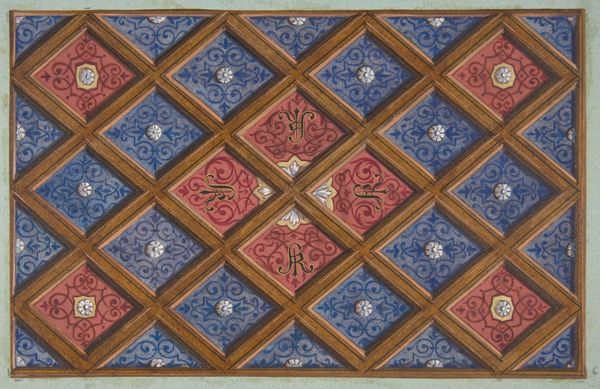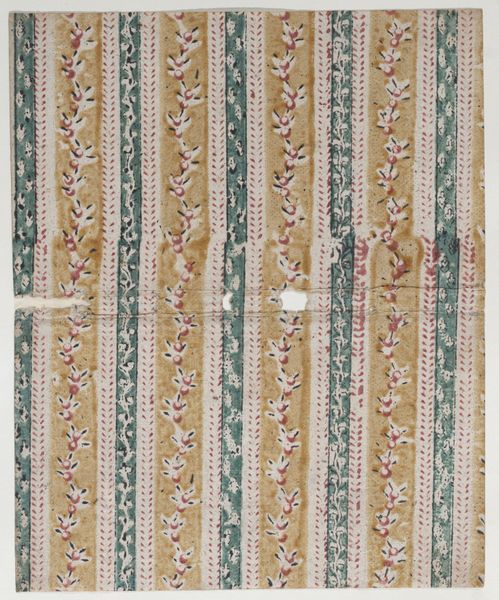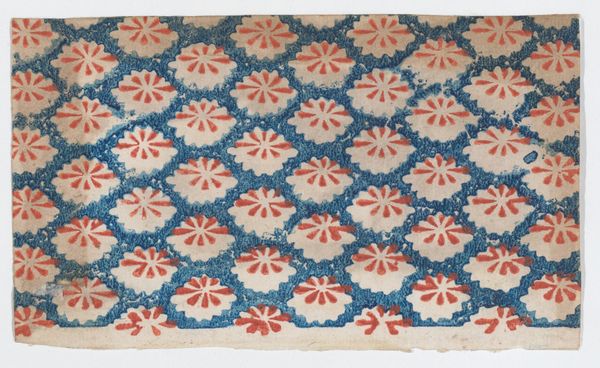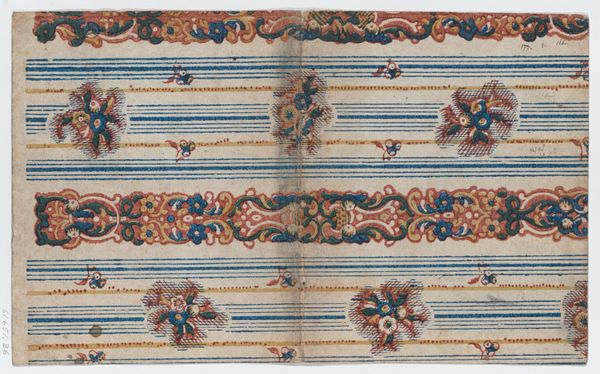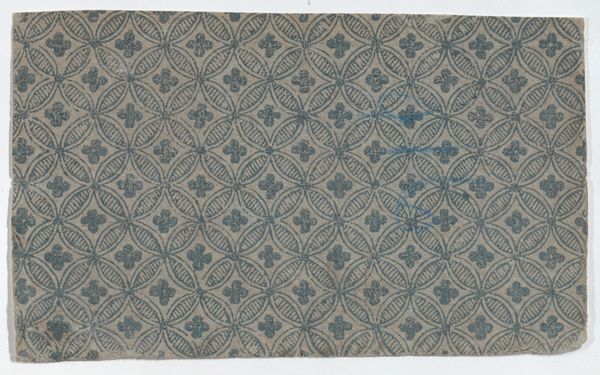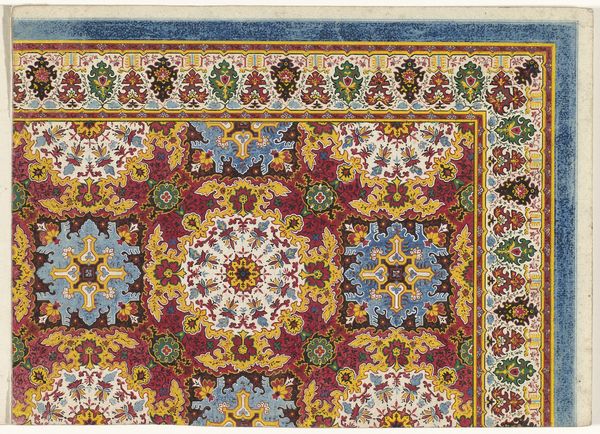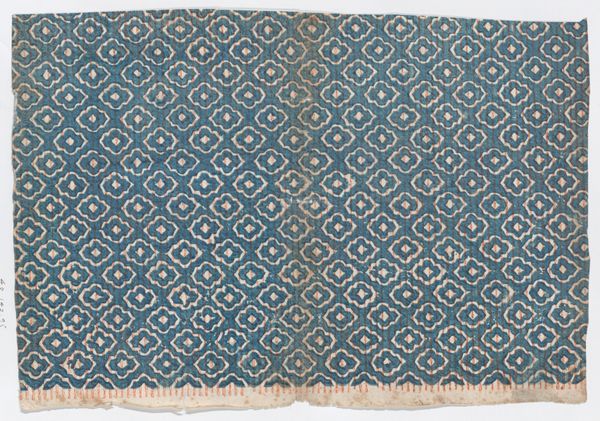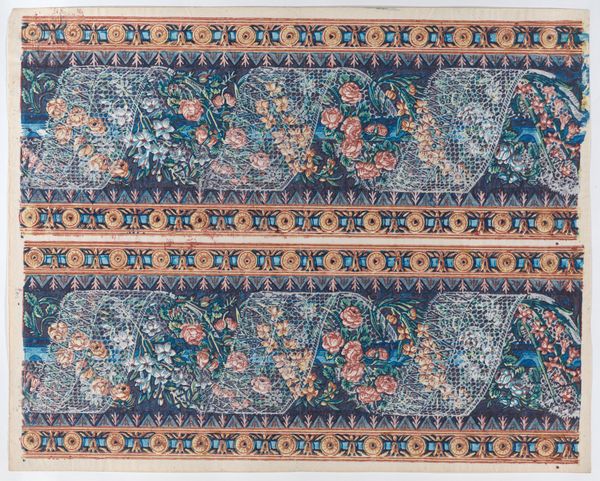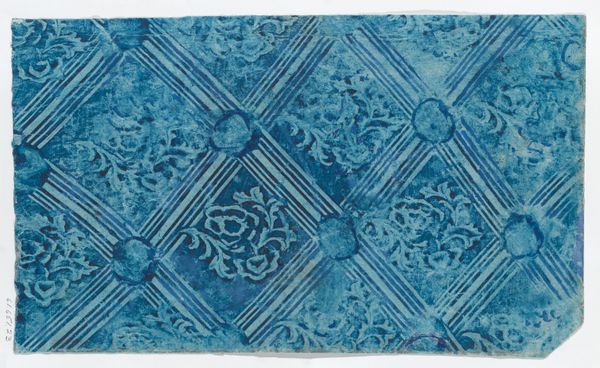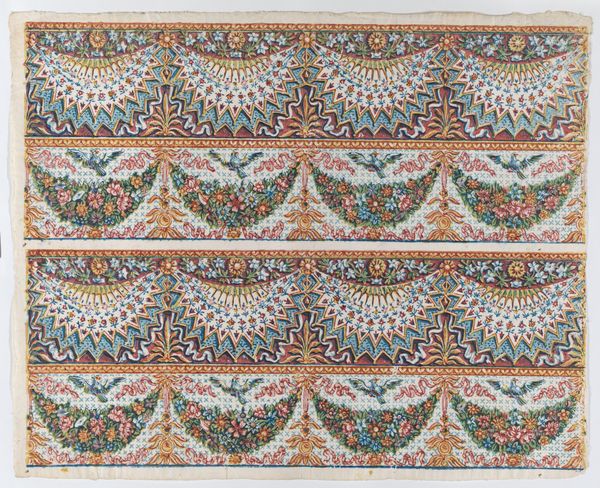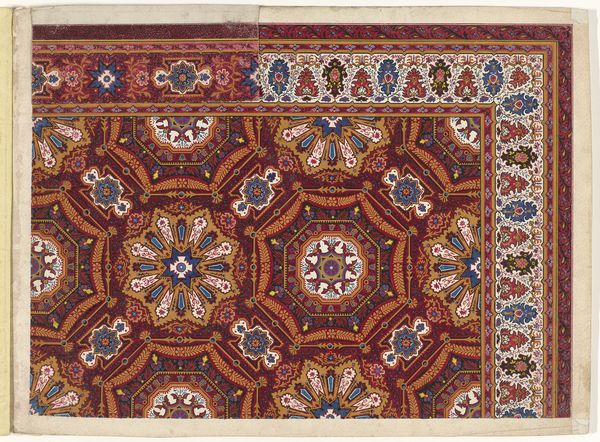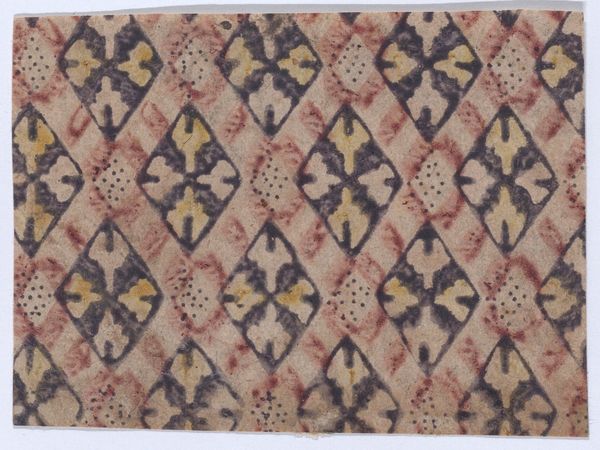
Sheet with five borders with floral and striped patterns 1800 - 1900
0:00
0:00
drawing, paper
#
drawing
#
natural stone pattern
#
naturalistic pattern
#
paper
#
geometric pattern
#
repetitive shape and pattern
#
organic pattern
#
geometric
#
repetition of pattern
#
vertical pattern
#
pattern repetition
#
decorative-art
#
imprinted textile
#
layered pattern
Dimensions: Sheet: 7 1/8 × 9 9/16 in. (18.1 × 24.3 cm)
Copyright: Public Domain
Curator: Here we have "Sheet with five borders with floral and striped patterns," created by an anonymous artist sometime between 1800 and 1900. It’s currently held at the Metropolitan Museum of Art. Editor: My first impression is a gentle fading beauty. The repetitive nature of the floral and striped design creates an overall calming effect, despite the verticality. I’m also quite drawn to its materiality, looks like it may have been used for textiles. Curator: Indeed. Note the structured layout—the way the stripes and floral motifs alternate create a visual rhythm, further supported by its inherent geometry. Observe how the artist organized discrete floral and striped components to make the whole greater than the sum of its parts. It offers a formal cohesion. Editor: Thinking about textile production back then, imagine the labour invested in creating patterns, maybe block-printed, onto fabrics. The social context, particularly within artisan workshops, informs the reading of it today, where such repetitive tasks would probably be done with mechanized solutions. It does make me consider it within historical production networks and labour relations during this period. Curator: Intriguing how the material aspect intertwines with semiotics. Those blue flowers, interspersed with golden bands, echo the cyclical patterns in nature—growth and decay. In terms of form, notice the conscious utilization of negative space, providing a delicate balance. It speaks to enduring principles of design. Editor: Definitely. Consider the textile trade back then – these patterns reflect trade routes, global exchange, and the availability of materials. We see the flow of materials, labour, and finished products influencing both art and commerce. It serves as more than just ornamentation. Curator: And so, we arrive at a point where aesthetic contemplation meets a narrative about economic activity and artisanal creation. Editor: Indeed. A delicate piece like this reveals layers of historical engagement, reminding us that aesthetics are intertwined with labour, economy, and social life.
Comments
No comments
Be the first to comment and join the conversation on the ultimate creative platform.
